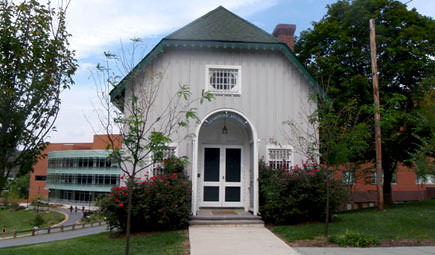My Postmodern artwork relies heavily on juxtaposing contrasting concepts near each other to achieve a chaotic, yet still balanced piece. Muted, black and white newspaper clippings frame the sides while jagged, brightly colored pieces of construction paper frame the top and bottom of the piece. The use of a primary triadic color scheme is consistently used in the center media pictures and in the construction paper. Black ink saturates the inner border of the newspaper clippings and torn construction paper. The ink also sporadically drips down the middle of the painting. The composition of the newspaper comics running vertically down to the article headlines as well as the construction paper creates a sense of symmetry. Even the mashed up media pictures at the center feel purposeful.
The connotative meaning of the piece is intended to remind us of how we tend to react with and about other human beings, and to make us reflect on what's becoming a rather vapid means of interaction. I would venture to say everybody has been guilty at one point or another of creating a scene similar to the young adults in the corner sitting around with each other but being too busy staring at their phones to actually interact with one another. This concept repeats with the couple in bed together. Physically, they couldn't be closer to each other, but mentally and emotionally they're so invested in the information they can get from their phones that their in-person relationship ceases to have true meaning or substance. More jarring is the now famous image of a bloodied Syrian boy being overshadowed by an angel emoji and praying hands. For me, one of the most disheartening things to see happening in our society is this watered down empathy we show towards heinous events. Instead of making real change or even bothering to recognize the real, hurting souls afflicted by tragedies world-wide, we reduce our reactions to smiling cartoons as a substitute for actual compassion. When that image was circulating around social media, it was horrifying to see the detachment people displayed by flooding this image with a smiley face donning a halo and some simpson-esque hands in a praying formation, as if that wasn't an actual child suffering at the hands of a war- ravaged country. Similarly, we're often quick to share "inspiring videos" or those images of the homeless that say "1 like=1 Prayer," but many people don't stop to help the homeless people they see in real life. This is why the image of the homeless man holding a sign that says "Like me" is so fitting. We're pacified by the concept of "keyboard activism" where we click a button and feel a sense of pride in ourselves as if we've made a change in the world for sharing a sad story or liking an image of a homeless man, but we've done nothing more than nod in acknowledgement that terrible things happen to people everyday and we don't care enough to take real action. This also ties into the color scheme of the piece. The complimentary triadic color scheme is meant to symbolize this simplistic, childish manner in which we choose to empathize with one another. The ideological meaning behind this piece centers around our current political climate that media and technology helped to produce. We allowed an unqualified, unstable fascist to become our president because we're so far removed from our actual surroundings and so consumed by this pseudo-society we cultivate virtually, that we don't care what happens to our physical earth. Instead of people believing actual, trained scientists that climate change is a real and imminent threat, we let Trump tell us anything that doesn't align with what he says is fake news. And rather than be terrified by this dictator behavior, we laugh and turn it into a meme or a sketch on a comedy show or a funny Halloween costume, ignoring the fact that real people are being hurt by this man's actions. The bigger ideological concept in this piece is this belief that we're consuming media when in fact media and information are consuming us. Hence the depiction of what we consume being located inside the "mouth" of the media. The jagged colorful paper is meant to represent the teeth of this media entity that has full control over what we talk about, how we dress, what should interest us, and how we should feel about current "trending" issues that we're told to focus on. For example, we spent an entire summer turning a killed gorilla into a celebrity rather than focus on real world issues or the still occurring election campaigns. It is through this consuming, pervasive presence that the media has been able to manipulate us into staring at the puppets so we don't pay attention to the people controlling the strings. So, sure, we have more and more information, but we absolutely live in a world with less and less meaning.










